Up-regulation of phosphorylated/activated p70 S6 kinase and its relationship to neurofibrillary pathology in Alzheimer's disease
- PMID: 12875979
- PMCID: PMC1868198
- DOI: 10.1016/S0002-9440(10)63687-5
Up-regulation of phosphorylated/activated p70 S6 kinase and its relationship to neurofibrillary pathology in Alzheimer's disease
Erratum in
- Am J Pathol. 2003 Dec;163(6):2645
Abstract
The ribosomal S6 protein kinase p70 S6 kinase is known for its role in modulating cell-cycle progression, cell size, and cell survival. In response to mitogen stimulation, p70 S6 kinase activation up-regulates ribosomal biosynthesis and enhances the translational capacity of the cell. In Alzheimer's disease (AD), there is a marked increase in total tau protein in the form of abnormally hyperphosphorylated tau (PHF-tau) in neurons with neurofibrillary tangles (NFTs). In the present study, we investigated whether p70 S6 kinase activation is associated with PHF-tau accumulation in AD. By immunohistochemistry, we found that the levels of phosphorylated p70 S6 kinase (at Thr389 or at Thr421/Ser424) were increased in accordance with the progressive sequence of neurofibrillary changes according to Braak's criteria. Confocal microscopy showed that in AD brain, phosphorylated p70 S6 kinase appeared especially in neurons that are known to later develop NFTs. This pattern of neurons showed dot-like structures of phosphorylated p70 S6 kinase and hyperphosphorylated tau, which partially correlated with rab5 (endosome marker), lamp-1 (lysosome marker), and ubiquitin (ubiquitin-proteasomal system marker). By indirect enzyme-linked immunosorbent assay, phosphorylated p70 S6 kinase (Thr389 or Thr421/Ser424), total tau, and PHF-tau were found to be significantly increased in AD brain as compared to control cases. The levels of total p70 S6 kinase and p70 S6 kinase phosphorylated at Thr421/Ser424 showed significant correlations with the levels of both total tau and PHF-tau. Regression analyses revealed a significant dependence of total tau or PHF-tau on p70 S6 kinase phosphorylated at Thr421/Ser424 rather than at Thr389. The levels of ribosomal protein S6 as well as the levels of markers for the proteolytic system were also significantly increased in AD as compared to control brain. Using a SH-SY5Y neuroblastoma cell model, we found that 100 micro mol/L zinc sulfate could induce p70 S6 kinase phosphorylation and activation, in particular at Thr421/Ser424. This up-regulation of the activated kinase resulted in an increased expression and phosphorylation of tau. Pretreatment of cells with rapamycin (an inhibitor of FRAP/mTOR which is the immediate upstream kinase of the p70 S6 kinase) attenuated the effects induced by zinc. In primary cultured neurons of rat cortical cortex, zinc sulfate treatment could repeat p70 S6 kinase phosphorylation and activation at Thr421/Ser424, followed by increased expression and phosphorylation of tau. Taken together, these data suggest that activated p70 S6 kinase could mediate an up-regulation of tau translation. The partial co-localization of phosphorylated p70 S6 kinase with rab5, lamp-1 and ubiquitin, or PHF-tau with ubiquitin suggests that the activated proteolytic system might not be sufficient to degrade the over-produced and over-phosphorylated tau protein. A p70 S6 kinase modulated up-regulation of tau translation might contribute to PHF-tau accumulation in neurons with neurofibrillary changes.
Figures
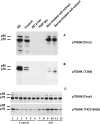
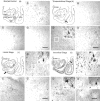
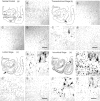


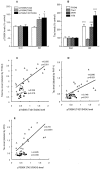
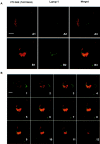
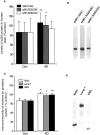
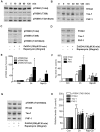

References
-
- Grundke-Iqbal I, Iqbal K, Quinlan M, Tung Y-C, Zaide MS, Wisniewski HM: Microtubule-associated protein tau, a component of Alzheimer-paired helical filaments. J Biol Chem 1986, 261:6084-6089 - PubMed
-
- Braak H, Braak E, Grundke-Iqbal I, Iqbal K: Occurrence of neuropil threads in the senile human brain and in Alzheimer’s disease: a third location of paired helical filaments outside of neurofibrillary tangles and neuritic plaques. Neurosci Lett 1986, 165:351-355 - PubMed
-
- Iqbal K, Grundke-Iqbal I, Zaidi T, Merz PA, Wen GY, Shaikh SS, Wisniewski HM, Alafuzoff I, Winblad B: Defective brain microtubule assembly in Alzheimer’s disease. Lancet 1986, 2:421-426 - PubMed
Publication types
MeSH terms
Substances
Grants and funding
LinkOut - more resources
Full Text Sources
Other Literature Sources
Medical
Miscellaneous

